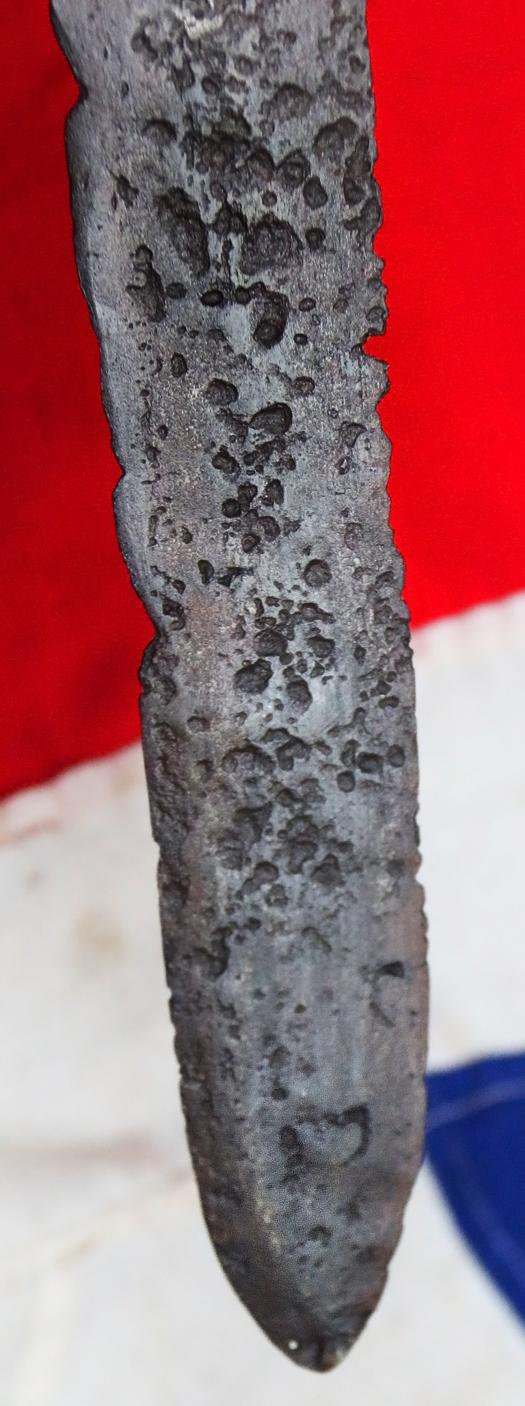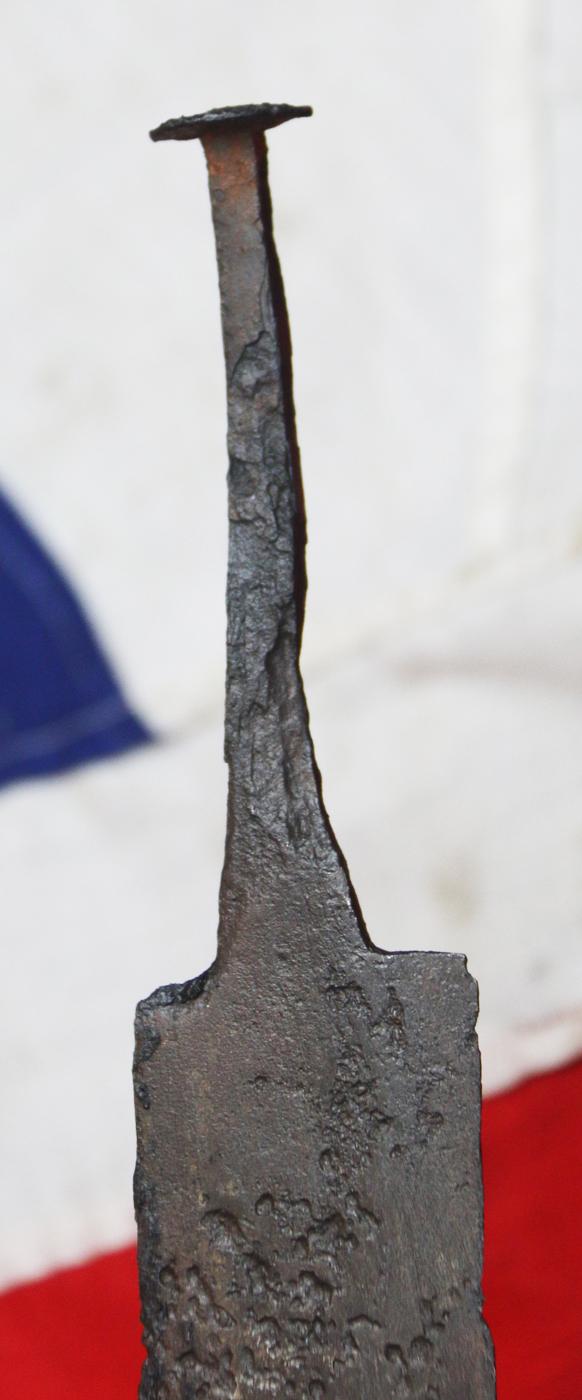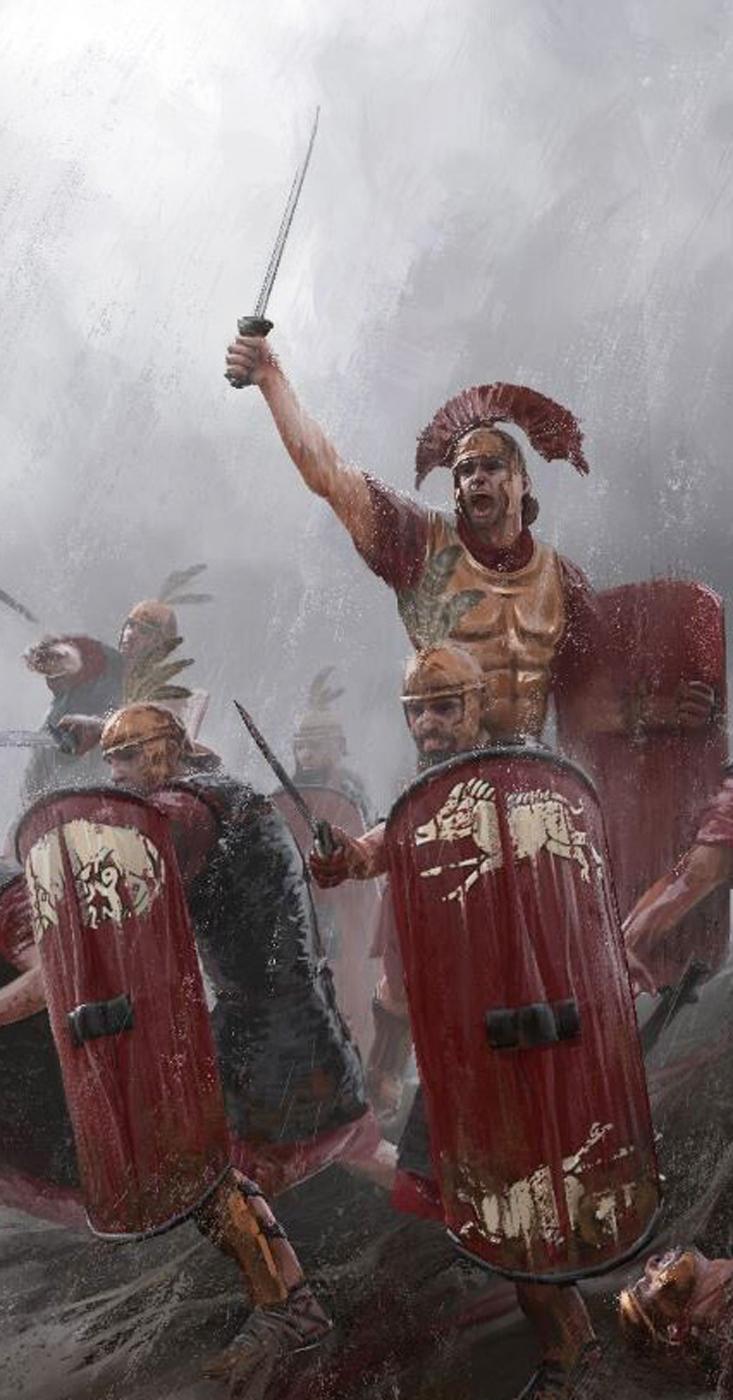An Original, Rare, Anno Domini 4th Century. Original Roman Legionary's 'Spartha' Sword. An Amazing & Rare Historical Sword of The Roman Empire. Almost Identical To Those Discovered In The Nydam Treasure Horde of Nordam Mose in Denmark
We are always delighted to be able to offer original ancient and medieval swords for our clients, especially Roman swords, as they are so iconic of the Imperial Roman age. In fact, most likely, the legionaries sword is most famous historical artifact of the largest imperial civilisation of ancient history.
A superb original Roman spatha, circa anno domini 300, a most rare and a highly collectable original weapon of the ancient Roman Empire. A contemporary original sword to the the Nydam Treasure Horde of Nordam Mose in Denmark, a Roman sword cache, and the form of sword said to be connected to the legendary sword of Beowulf.
During the Second Punic War, 218 to 201 B.C {ante Christum natum} Celtic mercenaries introduced the spatha sword form to the Roman army. Originally the spatha was a weapon used by the Roman cavalrymen, while the auxiliaries and legionaries used the gladius form of sword instead. However eventually, the Roman infantry would adopt the spatha in the anno domini 2nd century . It was a very versatile sword, undergoing many changes from its origins in Gaul to its usage in the Roman military.
To look at what an Emperor's military attire looked like in the anno domini 5th century , we mostly have to look to the Diptych of Emperor Honorius, which does show an Eagle-hilted sword, but on another panel he wears a Germanic-derived Spatha just as this one.
This Romano Germanic style, to our best evidence, were the ones the Roman legions and their Emperors of the Empire were largely and mostly using in the anno domini 5th century , but certainly many were used in the three centuries before.
The spatha was a type of straight and long sword, measuring between 0.5 and 1 m (19.7 and 39.4 in), with a handle length of between 18 and 20 cm (7.1 and 7.9 in), in use in the territory of the Roman Empire during the AD 1st to 6th centuries . Later swords, from the 7th to 10th centuries, like the Viking swords, are recognisable derivatives and sometimes subsumed under the term spatha.
The Roman spatha was used in war and in gladiatorial fights. The spatha of literature appears in the Roman Empire in the AD 1st century as a weapon used by presumably Celtic auxiliaries and gradually became a standard heavy infantry weapon, relegating the gladius to use as a light infantry weapon. The spatha apparently replaced the gladius in the front ranks, giving the infantry more reach when thrusting. While the infantry version had a long point, versions carried by the cavalry had a rounded tip that prevented accidental stabbing of the cavalryman's own foot or horse.
Archaeologically many instances of the spatha have been found in Britain and Germany. It was used extensively by Germanic warriors. It is unclear whether it came from the Pompeii gladius or the longer Celtic swords, or whether it served as a model for the various arming swords and Viking swords of Europe. The spatha remained popular throughout the Migration Period. It evolved into the knightly sword of the High Middle Ages by the 12th century.
This Roman sword would date from the era of Emperor Valentinian I. He was Roman emperor from anno domini 364 to 375. Upon becoming emperor, he made his brother Valens his co-emperor, giving him rule of the eastern provinces. Valentinian retained the west.
During his reign, Valentinian fought successfully against the Alamanni, Quadi, and Sarmatians. Most notable was his victory over the Alamanni in anno domini 367 at the Battle of Solicinium. His general Count Theodosius defeated a revolt in Africa and the Great Conspiracy, a coordinated assault on Roman Britain by Picts, Scots, and Saxons. Valentinian was also the last emperor to conduct campaigns across both the Rhine and Danube rivers. Valentinian rebuilt and improved the fortifications along the frontiers, even building fortresses in enemy territory.
He founded the Valentinianic dynasty, with his sons Gratian and Valentinian II succeeding him in the western half of the empire.
In early anno domini 368, Rando, a barbarian chieftain, fell unexpectedly on the town of Moguntiacum (modern Mainz) on the Rhine, and put the defenceless inhabitants to the sword, before retiring over the river. Valentinian, furious, now determined to anticipate their future depredations by a campaign into their own territory beyond the Rhine. Count Sebastian was deputed to encircle the enemy from the south, by way of Rhaetia, while the emperor himself advanced with the entire forces of the west from Gaul. Finding their arms inadequate for the defence of their fields and villages, the Alemans retreated into the mountains, erecting their camp on an unidentified hill referred to as "Solicinium", in the area of Württemberg.
It is reported that the emperor, while on a personal reconnaissance of the enemy position on the lower reaches of the mountain, was nearly captured by an advanced party of the enemy who had been placed in ambuscade, losing his helmet and standard-bearer while retreating.
The battle
There is little known about the actual battle. It appears that Valentinian carried their defences by a general assault, charging up the slope, and the barbarians, when they were ejected from the summit, were driven down the opposite side of the hill into the clutches of Sebastian, who had been placed in their rear to anticipate the retreat. The result was the total defeat of the Alemans.
The next mention of spathae is in the anno domini 5th century, by Vegetius, now as a weapon carried by infantry. The term "Roman Iron Age" refers approximately to the time of the Roman Empire in north Europe, which was outside the jurisdiction of the empire, but, judging from the imported Roman artifacts, was influenced by Roman civilization. One source of artifacts from this period are the bogs of Schleswig, Holstein and Denmark. Objects were deliberately broken and thrown into the bog in the belief that they could go with a deceased chief on his voyage to a better place.
A cache of 90 swords was found at Nydam Mose in Denmark in 1858. They were in the form of the spatha and therefore have been classified as "Roman swords". They are dated to the AD 3rd to 4th centuries. Many connect the Nydam cache with the sword of Beowulf, who was supposed to be a contemporary. See a photo of these Roman treasure horde swords in the gallery.
As with almost all original ancient Roman steel weaponry recovered in the past two hundred years or so, such as daggers and swords, their hilts do not survive and are effectively non existent today. this is due their crossguards, grips, pommels, and scabbards being almost entirely made of organic material, thus only the blades and their hilt’s tangs of the swords and daggers still exist, are the only parts of the whole weapon to survive the ravages of time till today.
The surface of this superb sword is heavily pitted, but that is absolutely usual with all recovered original Roman swords from the ancient times, see the photo in the gallery of the Nydam cache, but the blade is still remarkably sound.
The discoveries at Nydam Bog originate from so-called spoils-of-war sacrifices. The weapons comprise swords and shields, spears and lances, axes, bows and arrows. The warriors’ personal equipment and possessions were also sacrificed.
The swords, spearheads and bronze shield fittings were from the beginning of the 3rd century AD. They were found in a boundary zone between two of Engelhardt’s excavation sites. Nydam Bog is situated in Oester Sottrup, Sundeved, eight kilometres from Soenderborg. The bog, which in the Iron Age was a sacred lake, is renowned for its rich sacrificial finds from the period A.D 200-400 . "The Nydam Boat" is the most famous of the finds, and is on display at Gottorp Castle in Slesvig.
It come complete with a fine, carved wooden stand, see photo gallery but would also look stunning if bespoke framed.
Approximately 30.2 inches long overall.
Every single item from The Lanes Armoury is accompanied by our unique Certificate of Authenticity. Part of our continued dedication to maintain the standards forged by us over the past 100 years of our family’s trading, as Britain’s oldest established, and favourite, armoury and gallery
Interest in the archaeology of Nydam Bog has always been particularly lively in the local area. The Nydam discoveries were and remain a significant theme in the relationship between Danish and German/Romano cultures in the border region.
On this basis, the “Society for Nydam Research” – commonly known as the Nydam Society - was formed in 1983. Through its work, this interest group has contributed to the resumption of National Museum of Denmark’s investigation of the bog.
His Royal Highness Prince Joachim of Denmark is patron of the Nydam Society.
Code: 24421
8995.00 GBP










